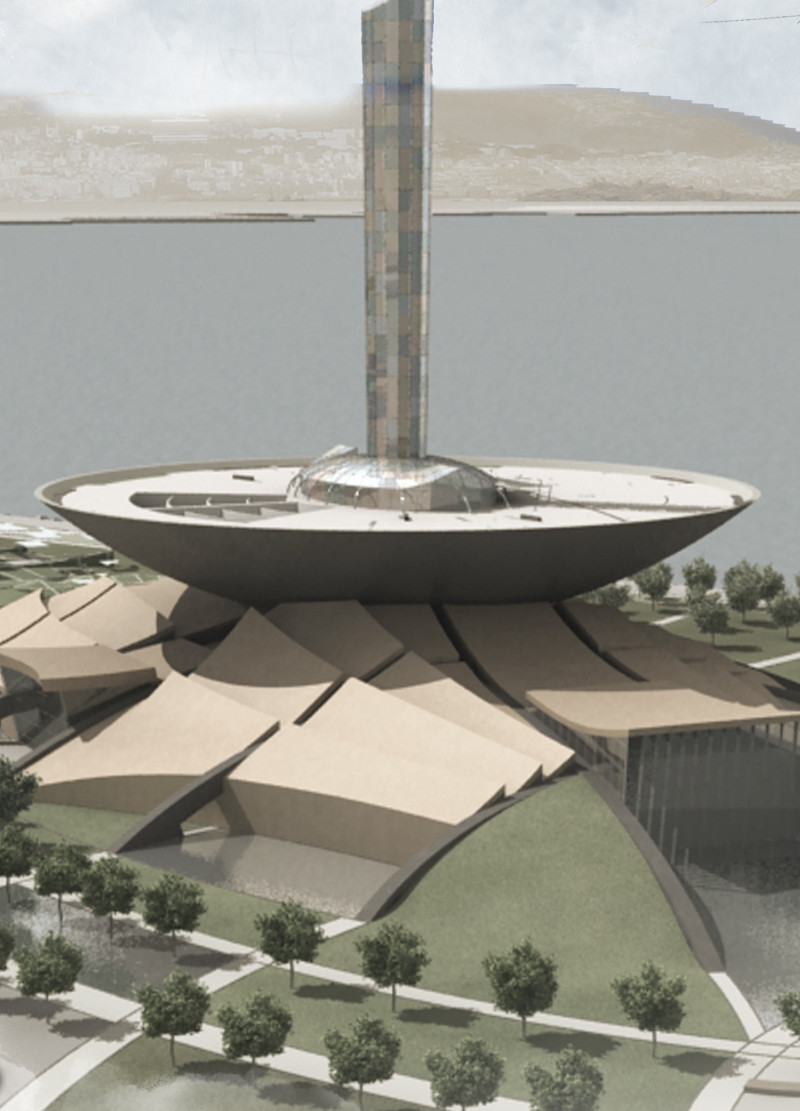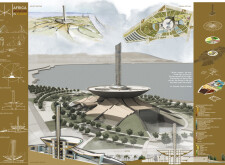5 key facts about this project
### Overview
The Africa Museum is situated in Algiers, Algeria, and functions as a cultural initiative dedicated to the exhibition of African heritage. The design emphasizes a connection between diverse cultures, nature, and the historical context of the continent. It merges contemporary architectural practices with traditional influences, specifically highlighted through the central tower, or "gnomon," which serves both a symbolic and functional role within the museum.
### Spatial Organization and Landscape Integration
The layout of the museum is predicated on a central circular plaza that radiates outward, symbolizing the cultural diversity of Africa. This organization fosters distinct functional zones, designed to enhance visitor experience through both movement and engagement with exhibits. The site includes areas allocated for recreational use, administrative functions, and exhibition space, facilitating a range of interactions from observation to participation.
The design incorporates natural ventilation strategies and efficient water management systems, underscoring a commitment to sustainability. Surrounding gardens feature native plant species that support local biodiversity and minimize irrigation, contributing to the museum’s environmental responsibility.
### Materiality and Architectural Features
The primary structure is composed of reinforced concrete and steel, ensuring durability while reflective glass cladding on the tower creates a dynamic visual interaction with light throughout the day. The gnomon serves a dual purpose of symbolically guiding time and light, further enhancing the visitor's experience by encouraging exploration.
The roof design, characterized by a petal shape, opens towards the sky while providing shade and shelter for outdoor activities. This form not only enhances the visual appeal but also invites tactile engagement, blending organic shapes with geometric design.
The integration of innovative water harvesting systems addresses regional climate considerations and serves as an educational tool for visitors, promoting sustainable practices. Additionally, interactive learning spaces within the museum support educational programs and cultural exhibitions, furthering the vision of awareness and appreciation for African heritage.


















































